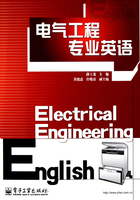
Lesson Two Transformers
The purpose of the transformer is to isolate the different parts of the electric power distribution system into several partitions, normally in order to obtain different voltage levels and sometimes also for phase shift. Phase shifting transformers can be used to feed frequency converters, e.g. for variable speed propulsion drives, in order to reduce the injection of distorted currents into the electric power network by canceling the most dominant harmonic currents. This reduces the voltage distortion for generators and other consumers. The transformers also have a damping effect of high frequency conductor emitted noise, especially if the transformer is equipped with a grounded copper shield between primary and secondary windings.
There are numerous different transformer designs in use, and the most common types are; air insulated dry type, resin insulated (cast or wound), or oil/fluid insulated. Regulations, ambient conditions, and user’s, yard’s, or supplier’s preferences govern the selection of type, material, and design of the transformer.
Physically, the transformer is normally built as three-phase units, with three-phase primary coils and three-phase secondary coils around a common magnetic core. The magnetic iron core constitutes a closed path for magnetic flux, normally with three vertical legs and two horizontal yokes; one in bottom and one at top. The inner winding constitutes the low voltage or secondary windings, and the outer is the primary or high voltage winding. The ratio of primary to secondary windings gives the transformation ratio. The coils may be connected as a Y-connection or △-connection (also called D-connection). The connection may be different on primary and secondary sides, and in such transformers, not only the voltage amplitude will be converted, but there will also be introduced a phase shift between the primary and secondary voltages. The phase shift can also be adjusted by use of Z-connected windings, normally in the primary, where the phase shift angle can be accurately determined by the ratio of turns in the segments of the Z-windings. Three or four winding transformers with multiple secondary windings are also in use, e.g. for multi-pulse drive applications.
A transformer with △-connected primary and Y-connected secondary is called a Dy type transformer. The first and capital letter describes the primary winding, and the second and small letter describes the secondary winding. The letter n is used to describe if the common point in a Y-connection is grounded, e.g. Dyn or Ynyn.
Transformers may be designed according to IEC standards. For converter transformers, it is essential that the design accounts for the additional thermal losses due to the high content of harmonic currents. IEC also gives design rules and guidelines for such applications.
New Words and Expressions
partition [pɑːˈti∫ən] n. 分割;分开;被分开;区分,划分,配分
harmonic[hɑːˈmɔnik] n. 谐波;谐音
damping[ˈdæmpiŋ] n. 阻尼,减幅,衰减
insulate[ˈinsjuleit] vt. 使绝缘;使绝热
ambient [ˈæmbiənt] adj. 包围着的,周围的
magnetic [mægˈnetik] adj. 磁(性)的;(可)磁化的
flux [flʌks] n. 流量,通量,电通量,磁通量
horizontal [ˌhɔriˈzɔntl] adj. 地平的,地平线的
yoke [ jəuk] n. 轭状物
thermal [ˈ θəːməl] adj. 热的,热量的,温热的;由热造成的
Notes
(1)“…not only the voltage amplitude will be converted, but there will…”
not only... but... 不但……而且…… 这里but后省略了also,“not only …but also…”是并列连词,通常连接两个等同的成分。它所连接的两个等同成分强调后者。
例如:
1)Furthermore, education is not only just about knowledge but also about values.
此外,教育并不只求知识的传授,也重视价值观的培养。
2)We will protect not only individual rights, but also must shoulder collective responsibilities.
我们保障个人权利,但也应该承担集体责任。
(2)“… for the additional thermal losses due to the high content of harmonic currents.”
due to由于, 应归于
例如:
1)Inability to stand due to muscular incoordination.
由于肌肉不协调而不能站立。
2)His illness was due to overwork.
他的病起因于过度劳累。